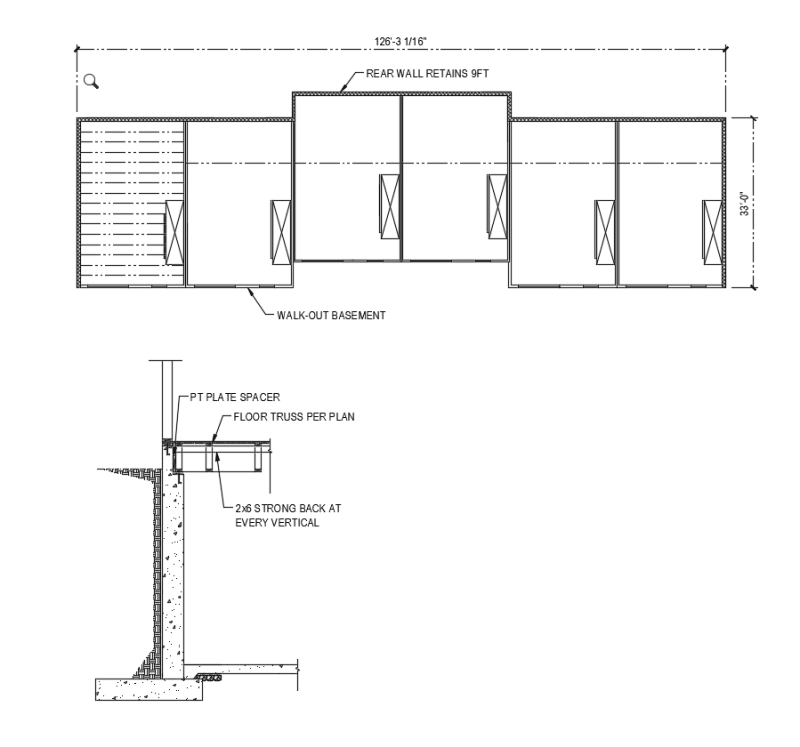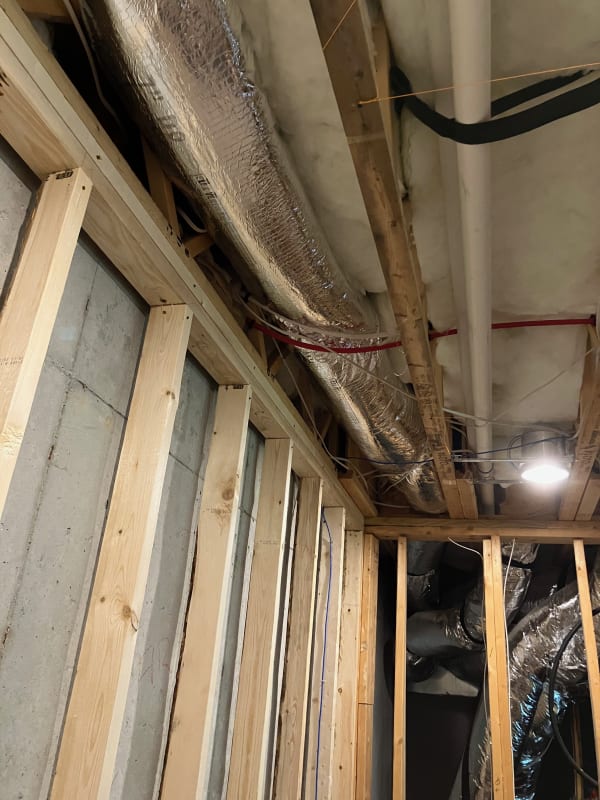Ben29
Structural
- Aug 7, 2014
- 325
This is my first time designing townhomes. The overall length of the row of townhomes is 126ft. The width is 33ft. The rear wall retains about 9ft of soil. The front wall retains nothing. I think I need to provide a cantilever retaining wall at the rear since the soil forces are not counter-balanced. Are the owners going to think I am crazy?
And since the floor trusses run parallel to the rear wall, would you add full depth blocking or a 2x6 strong back between the floor truss for the first 2 bays?

And since the floor trusses run parallel to the rear wall, would you add full depth blocking or a 2x6 strong back between the floor truss for the first 2 bays?


![[bigsmile] [bigsmile] [bigsmile]](/data/assets/smilies/bigsmile.gif)
